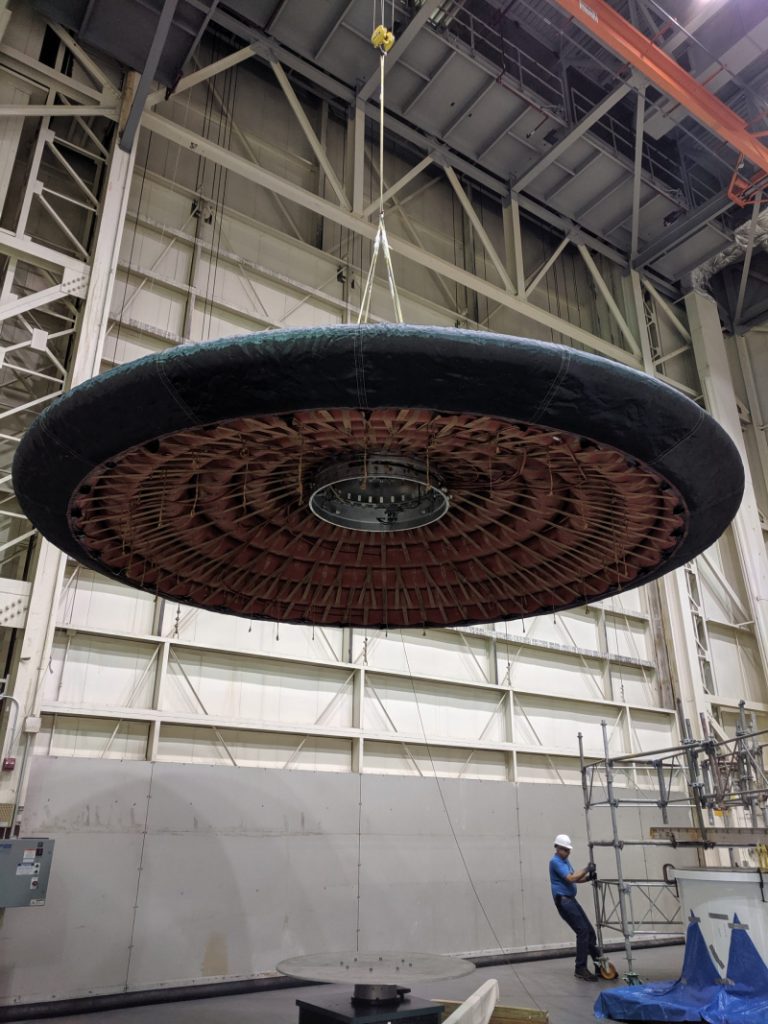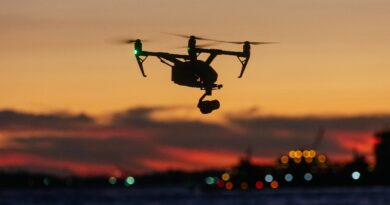It’s not a UFO. It’s NASA’s new heat shield

Not a UFO. A giant inflatable donut in space!
A new inflatable heat shield design from NASA and United Launch Alliance might be the key to safely landing the huge interplanetary spaceships humanity will need one day, if we are going to colonize Mars. The new heat shield – now being developed and soon-to-be tested – looks like a flying saucer, straight out of a 1950s thriller sci-fi movie.
The new shield – called the Hypersonic Inflatable Aerodynamic Decelerator (HIAD) – has been in the works for several years. It consists of a set of super strong balloons, built to withstand the extreme heat of an atmospheric re-entry. When lashed together, the structure looks a whole lot like a classic saucer-shaped UFO. NASA describes it like this:
The HIAD design consists of an inflatable structure that maintains its shape against the drag forces, and a protective flexible thermal protection system that withstands the heat of reentry. The inflatable structure is constructed with a stack of pressurized concentric rings, or tori, that are strapped together to form an exceptionally strong blunt cone-shaped structure.
The test mission – LOFTID (the Low-Earth Orbit Flight Test of an Inflatable Decelerator) – will fly to space aboard a ULA Atlas V 401 rocket. It’ll launch from Vandenberg Space Force Base in California no earlier than November 1, 2022. NASA will provide live coverage of the launch.
What goes up must come down
The test mission is hitching a ride with a NOAA weather satellite. Once the main payload is deployed to orbit, the heat shield will balloon to its full 6-meter (19.7-foot) diameter and launch a beacon to transmit test telemetry.
The UFO-like saucer will then fall to Earth on a spin-stabilized path called a ballistic trajectory. It’s due to splash down off the coast of Hawaii in the Pacific Ocean. And it’ll eject its data recorder before hitting the water.
[embedded content]
Conquering the Red Planet
Space engineers believe that an enormous heat shield like HIAD will be needed, when humanity begins making its way to Mars and beyond … not just to visit, but to stay. NASA said in a statement:
Since HIAD technology is larger than traditional aeroshells, it creates more drag and starts the deceleration process in the upper reaches of the atmosphere, allowing not only heavier payloads, but also landing at higher altitudes.
The key there is the word heavier. A heat shield like HIAD will allow, for example, large satellites now sitting dead in Earth-orbit, to be returned intact to Earth for refurbishment and recycling. And the powerful heat shield will also make possible for big heavy cargo ships to land on Mars, carrying the masses of equipment humanity will need to face the rigors of the Red Planet. NASA said:
The atmosphere of Mars is much less dense than that of Earth and provides an extreme challenge for aerodynamic deceleration. The atmosphere is thick enough to provide some drag, but too thin to decelerate the spacecraft as quickly as it would in Earth’s atmosphere.
HIAD bridges that gap, providing better braking than conventional shields over a much larger area.
It’ll be useful for both robotic and manned missions, NASA said.
Bottom line: NASA and the United Launch Alliance will test an innovative inflatable heat shield design in early November 2022.


